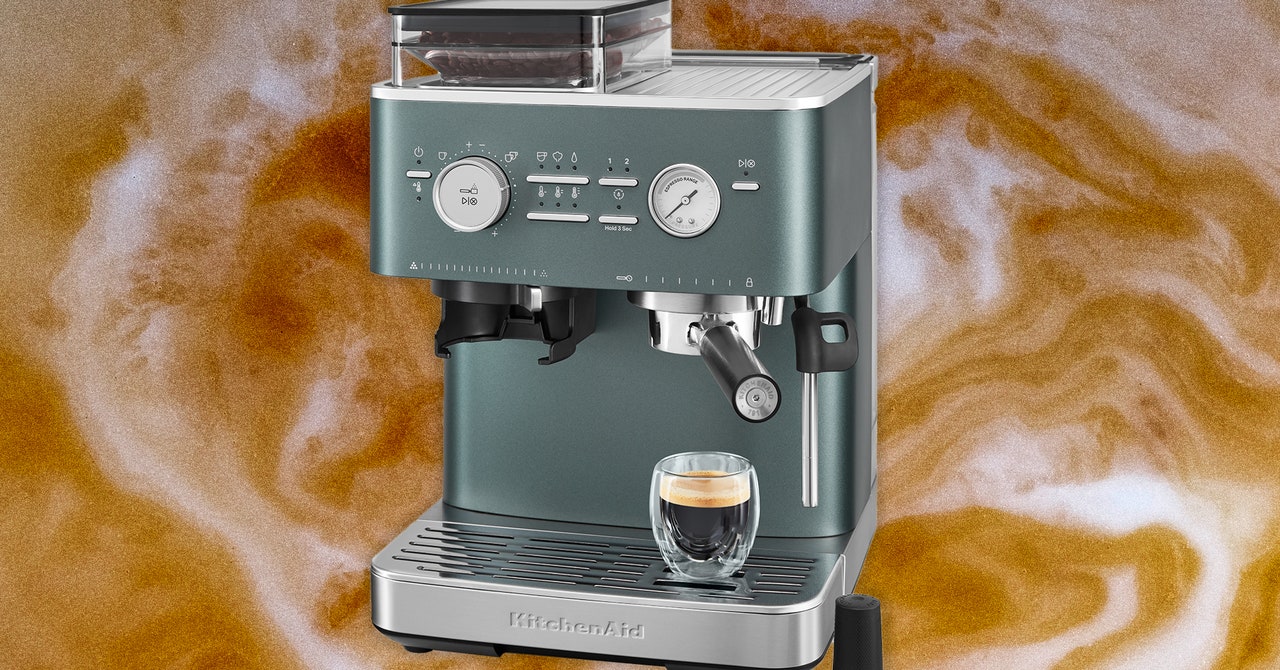KitchenAid is a A brand that has had a place in every home kitchen I’ve ever had, even as a child. When I first bought my own KitchenAid stand mixer after college, my apartment finally felt like a place where an adult lived. My affection for this stand mixer cannot be overstated, so naturally my ears perked up when KitchenAid announced it was revamping its espresso machine range.
There are three new fully automatic espresso machines: the KF8, KF7 and KF6. Then there is the semi-automatic espresso machine from KitchenAid and a 2-in-1 machine with an integrated grinder. I love a good fully automatic espresso machine for its convenience and ease of use, but part of me just longs for the practiced ritual of making your own espresso at home. The first of these machines to show up on my doorstep was the Semi Automatic, so here we are. Look out for my review of the automatic soon.
Considerate counter footprint
I’ve lived in an apartment my whole life and one of the many lessons I’ve learned from my life of house hunting is the value of storage space. When I first placed the KitchenAid semi-automatic espresso machine on my countertop, I couldn’t help but smile.
This is a fully featured espresso machine with a built-in grinder. And It fits into the space previously occupied by my rice cooker – a countertop space too narrow for other practical purposes. This machine is narrow, measuring approximately 13 inches in width and 15 inches in height. It fits comfortably and with enough space under my slightly low-hanging kitchen cabinets.
Photo: Jaina Gray
Due to the tight space in my kitchen, it is sometimes difficult to access the water tank on the back of the espresso machines I tested. I usually either have to struggle to get the tank out and get it to the faucet or resign myself to filling it by carrying one cup at a time from my sink to the machine. Thanks to the wheels on the bottom, the semi-automatic KitchenAid machine easily overcomes this small stumbling block. I can simply pull the machine away from the wall, turn it to the side and remove the water tank completely.
At first I was worried that the wheeled machine would be too slippery, making it difficult to tighten the portafilter without the whole thing constantly slipping. Luckily the wheels are smooth, but they require a bit of muscle to move – a good thing. In order to tighten the portafilter, you still have to hold it with one hand, but this is usual with small espresso machines anyway.
The wheels also make cleaning under and behind the machine much easier. I’m currently testing another espresso machine on my other countertop, and it’s so heavy that it’s a pain to move it around to clean up any spilled coffee grounds or ultra-fine coffee dust that’s built up behind the machine. A real pain given my chronic back problems.
Whisper quiet
This KitchenAid machine has Quiet Mark certification, meaning it’s been tested to ensure it’s as quiet as possible (there’s a cute little Q sticker on the front of the machine). I was skeptical because even quiet mills can get quite loud. I was wrong. This semi-automatic is possibly the quietest espresso machine I have ever tested.
Grinding the beans only produces a slight mechanical whirring noise. It’s quiet enough that you can continue to have a conversation while grinding – a test that every other grinder that has passed through my kitchen has failed, even the quietest ones. The grinder is also remarkably consistent. It produces a grind that is fine enough for espresso and coarse enough for other brewing methods. I think it can completely replace a countertop coffee grinder no matter what type of coffee you like to make.
